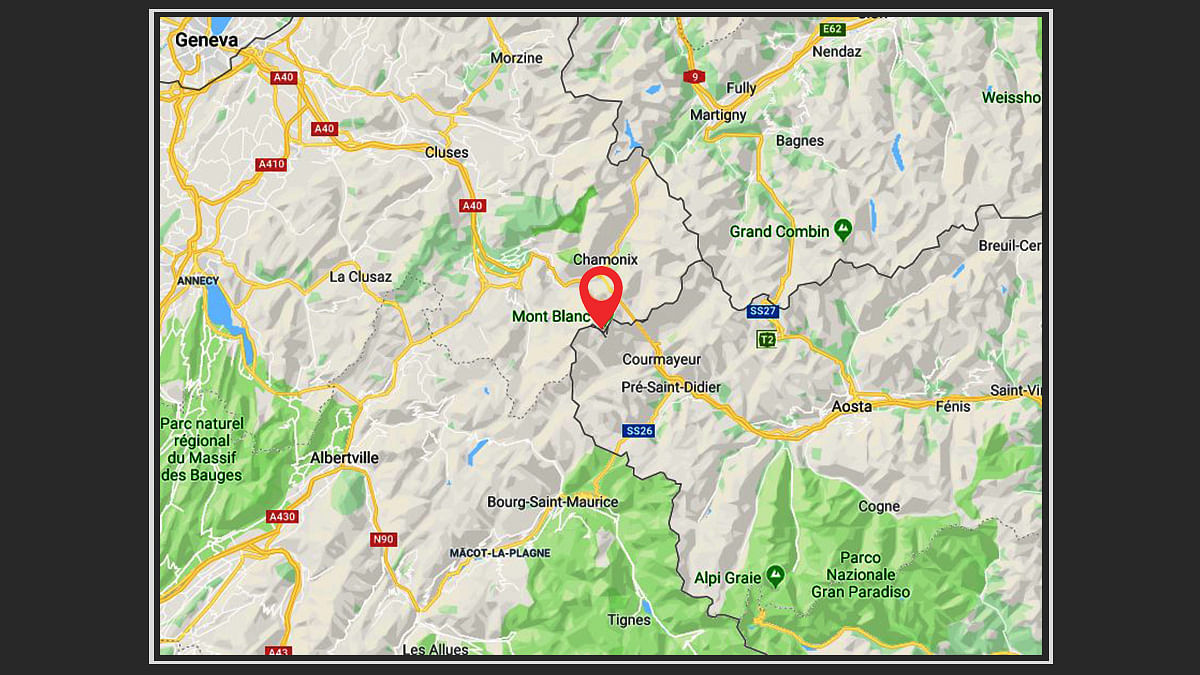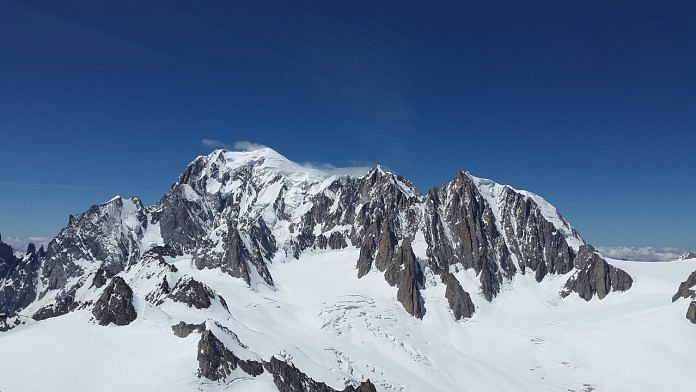New Delhi: On an official visit to France, Prime Minister Narendra Modi will Friday inaugurate a monument dedicated to victims of two deadly Air India plane crashes in 1950 and 1966.
Both planes crashed in the same region on the Mont Blanc mountain that lies along the French-Italian border and extends into Switzerland. There were no survivors, with the 1966 crash claiming the life of Homi Jehangir Bhabha — revered as the father of India’s nuclear programme.
In all, there were 48 people on board the aircraft that crashed in 1950 while 117 people, including 11 crew members, died in 1966.
The monument to honour them is located at Nid d’Aigle, a French village near the foothills of Mont Blanc. Designed by Bossonet Marbrerie, a French architectural firm, the monument “resembles a cairn (a mound of stones built as a memorial)” with its “balanced stones representing the ‘perfectly aligned thought and intention of the people’ of India and France to remember the victims of the two air crashes”.
ThePrint recreates what is known about these deadly crashes.
The tragic fate of ‘Malabar Princess’ and ‘Kanchenjunga’
On 3 November 1950, Air India flight 245, a Lockheed four-motor propeller plane named ‘Malabar Princess’ crashed into Rocher de la Tournette, a rocky point at a height of around 4,677 m on Mont Blanc. The Mumbai-London flight, with intermediate stops, had departed from Cairo and was to land in Geneva.

Rescue operations were delayed until 5 November due to stormy weather. The exact causes of this crash have never been ascertained.
The crash inspired French author Henri Troyat’s novel La Neige en Deuil (literally translated as “The Mourning Cloud”) that was later adapted into the 1956 film The Mountain starring Academy Award winner Spencer Tracy. In the movie, two brothers decide to go to the crash site to see if they can discover any valuable items.
There is comparatively more information on the 1966 crash when Air India flight 101, a Boeing 707 airliner named ‘Kanchenjunga’, crashed into the mountain. Again a Mumbai-London flight, it had made a stopover at Geneva.
According to the inquiry commission’s report, the crash was the likely result of a communication error between the pilot and the radar controller that led to a miscalculation in determining the plane’s position relative to Mont Blanc.
Discovery of jewels
Over the years, a lot of items have been discovered from near the crash sites. In 2013, a climber discovered a metal box that reportedly contained precious stones such as rubies, sapphires and emeralds estimated to be worth between $1,75,000 and $3,31,600. It isn’t clear as to which of the two crashes this box belongs to. Initial reports inclined more towards the 1950 crash but later ones suggested they were from 1966.
More important than any precious stones, however, are the diplomatic documents that have been periodically discovered from the area. According to a report, diplomatic documents classified “A” (top secret) and “B” (official communication) were discovered in 2016.
Some of these documents were related to “Indian assessments of Chinese defence production, missile development, and nuclear weapons program” and are from the 1966 crash. In 2012, a bag stamped “Diplomatic Mail” was also discovered. It contained newspapers reports from 1966.
The conspiracy theories
Given that Homi Bhabha was present on the aircraft that crashed in 1966, conspiracy theories exist on the crash. According to a French national, Daniel Roche, who has spent over half a decade researching the crash, it probably was a result of the plane being hit by a military aircraft or missile.
“While the parts of Malabar Princess were found around one spot, those of Kanchenjunga were found scattered around a 25 km range,” a report quotes him as saying. “If the Kanchenjunga had crashed into the mountain, there should have been a huge fire and an explosion as there was 41,000 tonnes of fuel in the aircraft. But that was not the case.”
Also read: 10 crashes, 11 aircraft lost, 22 killed — the year of Balakot has been a bloody one for IAF



